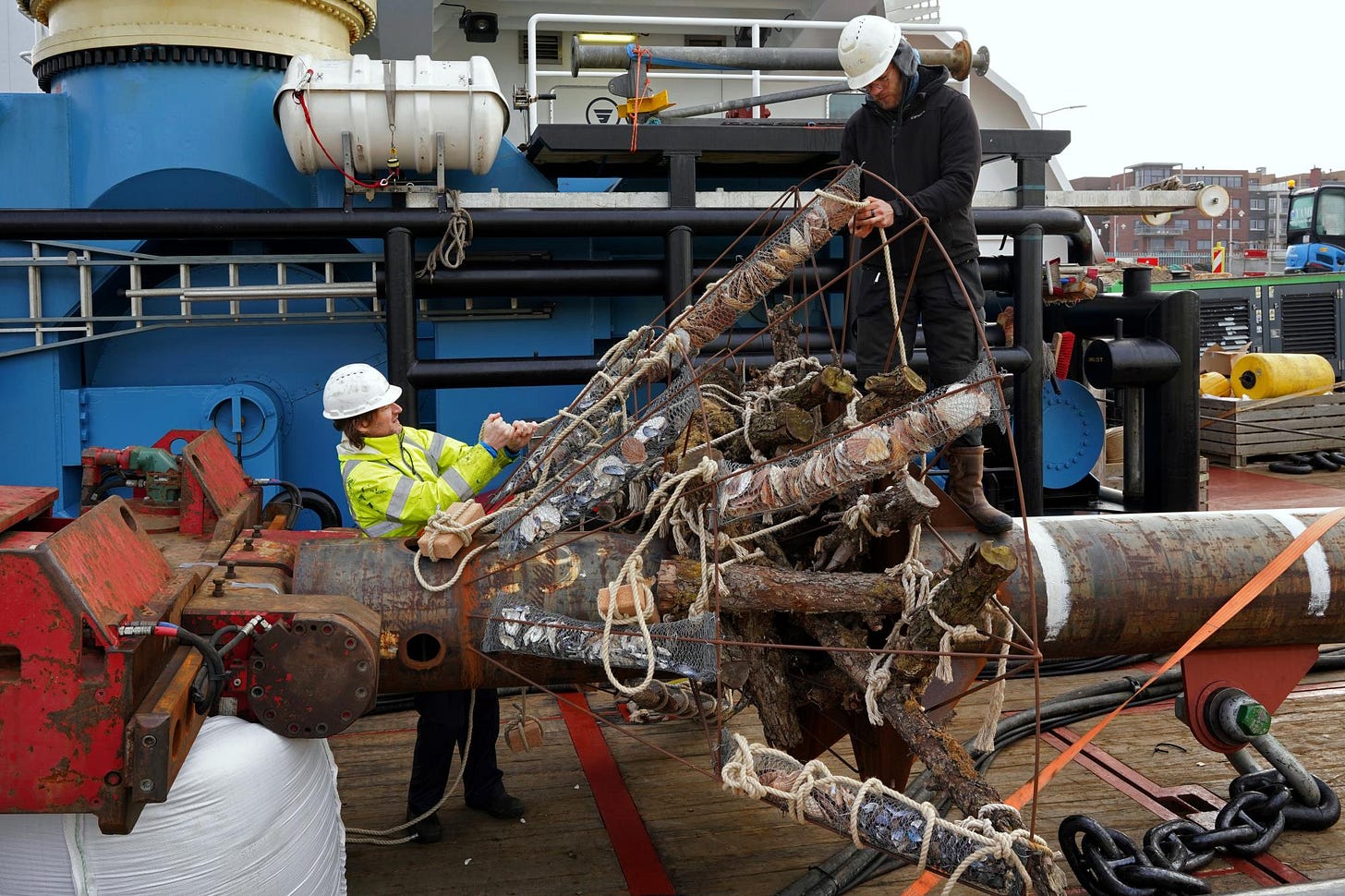Biobanking the future of seaweed
Plus: governments unveil 2030 visions, FAO brings species detail
When I visited the marine research center at Roscoff in Northern France this summer, I was shown an impressive library of sugar kelp strains, collected from all over Europe during the 10-year Genialg project. However, the project had finished up and the caretaker was leaving in a few weeks time, which would spell the end of this valuable collection.
To prevent losses like this from happening in the future, the Seastrains project now wants to build a Europe-wide centralized biobank network of seaweed strains to promote food security and biosecurity, conserve biodiversity under the threat of climate change and prevent the extinction of local strains.
Sounds like a good idea.
Governments unveil 2030 visions
Saudi Arabia is looking for $4B to develop its aquaculture sector. While the focus is on fish and shrimp, algae (mostly micro, some macro) will also be part of the strategy.
The EU has also come up with a new strategic vision for its aquaculture sector, with a promise to reduce the administrative burden for new aquaculture farms, and a new platform-of-platforms for the algae sector.
In a legal first, the Tsawout First Nation has licensed a seaweed farm to use their territorial waters without involvement of the Canadian government, under the controversial Douglas Treaties. Canadians have never had much respect for indigenous land rights, so it will be interesting to follow up on this.
FAO brings species detail
How much of a specific species is being farmed in a certain country? In which culture techniques? FAO reports did not drill down to this level of detail in the past. A new report fixes that.
A new global study by NOAA adds to the evidence for the environmental benefits of seaweed and shellfish aquaculture. 6 mechanisms to pay for these ecosystem services are explored in another paper: government subsidies and cost-sharing by the beneficiaries came out on top, while nutrient credits were seen as “challenging“.
Investments and prizes
The 3 winners of the Ocean Innovation Prize are all seaweed companies. Sharing the one million dollar prize are Biopac (Indonesia, bioplastics), Symbrosia (USA, livestock methane reduction) and SMO Solar Process (Sargassum processing).
Ocean Rainforest closed a round with a strategic partner, we read in the Katapult VC newsletter. No further details.

Business tidbits
Grasslands treated with The Seaweed Company’s biostimulants hold 700% more water at 10 cm depth. Since it is the Netherlands, they are also making seaweed cheese.
Other new seaweed products: dog food from Yelpkelp, Sargassum sunscreen from Origin by Ocean, nutraceuticals by Rootless.
Eco-anchors made from wood, cork, and shells were installed successfully at the North Sea Farmers Offshore Test Site to demonstrate that the anchoring systems of seaweed farms can promote biodiversity and become a part of the ecosystem.
The Solkelp pilot project wants to develop into a 60ha seaweed farm in Sines, Portugal.

Farmer stories from around the world
After 40 years as a fisherman, Captain David Blaney became the first kelp farmer in Rhode Island, while sextuagenarian fish farmer Owen Haines wants to replicate the Greenwave model in Wales.
In Tamil Nadu, female seaweed divers are finding less to harvest, due to climate change and overexploitation. In the Philippines, 5000 seaweed farmers are trying to recover from a devastating typhoon. And wedged between a rising shore, increasing ocean temperatures and tourism development, what future for Zanzibar’s Seaweed Mamas?
For a scientific answer to that last question, check out the new paper on African seaweed farming by Msuya et al.

Science
Restoration efforts for kelp forests may be most effective in areas where the bedrock seafloor is highly contoured, research by Oregon State University suggests. Where complexity doesn't exist naturally, it could be manufactured with artificial reefs.
Seaweed ecosystems may not mitigate CO2 emissions.
Finally, for the International Day of Women and Girls in Science last Friday: a portrait of Professor Catriona Hurd, investigating the diversity of native Tasmanian seaweeds, while developing some of them for aquaculture.



that is crazy, Genealg was a million heavy project and all ist lost?